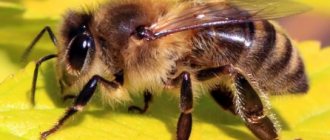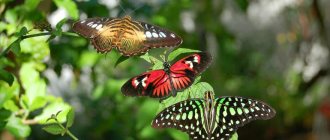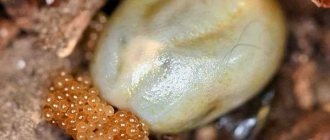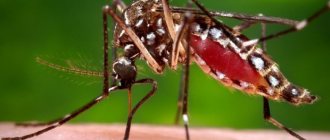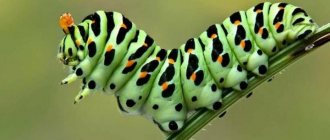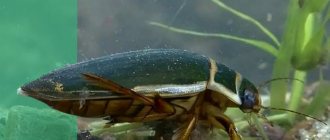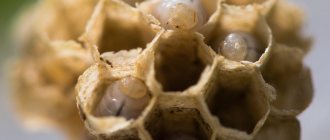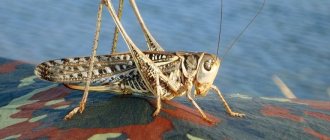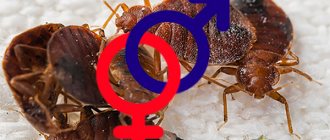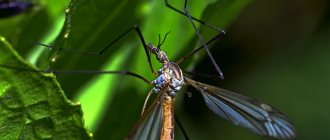- There are a lot of ants
- Ants can be very dangerous
- What are ant eggs
- Ants are very tasty
- Ants are not related to termites
- Most ants are females
- Ant queens live a very long time
- Ants have a slave system
- Ants are drawn to knowledge
- Ants are excellent farmers
Ants are very small insects, but despite this, they are considered the most highly organized creatures on Earth. For a long time they kept their secrets, and only very recently they began to be revealed, and scientists made a lot of very interesting discoveries in this area. Modern science is learning more and more new facts about the life of these amazing insects.
Ants live in communities; they are the most social representatives of the animal world. They live in anthills, where each member of the community has his own specific task. If the colony is in danger, then each member of the community will not hesitate to give his life for its survival.
Ants are the most ancient living creatures. This is one of the factors influencing the fact that these insects are subjected to in-depth study by scientists. It has long been proven that ants are descendants of wasps that lived many millions of years ago. There are many interesting facts about ants, and they will be discussed in this article.
There are a lot of ants
Edward Wilson (and he, by the way, is one of the most respected myrmecologists) estimated that the number of ant individuals is approaching 10 quadrillion. And here are some more interesting facts regarding the number of these insects: for every person living on planet Earth there are more than a million ants, and their total mass is approximately equal to the mass of the entire population of the Earth.
Note: there is a special science that studies ants - this is myrkeology. Myrmecologists are scientists who study these insects. Thanks to them, people's understanding of ants has expanded significantly, and we have learned interesting facts about them.
Do you know where there are the most ants? There is Christmas Island in the Pacific Ocean. So, per meter of its surface there are more than 2,200 representatives of the ant world. And in the west of the African continent there are about 2 billion of these insects per kilometer of territory. There are no other living creatures in the world that reach such numbers.
Signal to open
Interestingly, ants will not eat a food larva without a reason.
. In order for this to happen, the larva itself must signal that it is ready for use. A small drop of food liquid appears on the surface of the larva. And immediately other ants surround her and begin to squeeze and suck out the nutrient fluid. After a quarter of an hour, instead of a large larva, only a wrinkled shell remains.
Therefore, you should not be afraid of the appearance of an unnaturally large larva in a formicarium - this is not a sign of illness or some kind of abnormality, but a completely natural part of the life of an anthill.
Ants can be very dangerous
In equatorial Africa there are many dangerous and very dangerous animals, but the locals fear none more than stray ants. They gather in colonies of millions and go on campaigns, during which they destroy everything that gets in their way. These trips are the key to the survival of the colony. Stray ants are armed with huge jaws.
These insects have the largest size of all types of ants - the male is 3 cm, the queen is 5 cm. They pose a real danger to local residents. When people learn that an army of stray ants will pass through their village, they abandon their homes, taking their livestock with them.
If this is not done, the pets will be bitten to death. There is a positive aspect to this - when people return to their homes, they find that all the mice and rats have been destroyed.
But there are even more dangerous types of ants. A bullet ant can kill a person or large animal if it makes 30 bites per kilogram of its body weight. Their bites are very painful. They are much more noticeable than bee stings. The pain from the bites of these insects will not subside within 24 hours.
And here’s another fact: South American Indians have a custom of initiating a child into a man. During this procedure, a sleeve filled with a large number of ants is put on the teenager’s arm. The initiate must endure for several minutes. His hands swell greatly, and sometimes they are temporarily paralyzed.
Red ants in the apartment - where and how to find the nest
- 29.08.2017 13:45:48
- kleymanav
- reasonsred ant and nest
Not all ants are socially useful workers. This is well known to those who have had the bitter experience of surviving their “kitchen” invasion. One of the most common misconceptions is to believe that small ants in an apartment are the most common ants from the street, who did not deny themselves the pleasure of looking at you. In fact, such natural insects as the red forest ant or the black (garden) ant are very rare in apartments. And if you notice a red-haired guest in your apartment, rest assured that it is not “forest orderlies” who have come to see you. Most likely, the apartment was colonized by a species that specializes only in residential buildings - the red house ant. It is also called the pharaoh ant or ship ant. And you can’t call him the word “hard worker”; words like “heat-loving parasite” and “kitchen pest” are more suitable here.
There are many warm, hard-to-reach places in the apartment that are quite suitable for shelters - they provide almost complete safety for ants. Therefore, domestic ants do not need to build a traditional anthill, like their more industrious brothers. Just like getting food through hard ant labor becomes unnecessary, because food supplies do not stop all year round.
Where did the little ants come from? The homeland of these parasites is warm Asian countries. Therefore, in cooler climate zones, ants establish colonies only where it is warm all year round. The red house ant does not hibernate, and this species is not adapted to survive cold weather in the wild.
If there are ants in the house and the desire to get rid of them is extremely strong, then you will have to learn a lot about the lifestyle and biology of these pests. Only by observing how these insects behave can you begin to effectively fight them. In most cases, almost everyone is convinced from their own experience that the problem associated with red ants is not a one-time problem, but a systemic one.
There can be many infection situations, but in apartments the scenario is most often this:
- For the first time we noticed a lonely and, perhaps, the first in the apartment, a small scout ant. It appeared from nowhere, on the periphery (where there is no food). Here, most often, there are doubts about the reality of what was seen (imagined).
- Some time later, it became noticeable how 3-4 individuals were walking around a new path in the area of a new feeding center for them (there was plenty of food there this time).
- Finally, the problem culminated with the recently discovered grocery bag infested with ants.
In any situation, regardless of the stage of infection and the method of control used, in order to win the fight with ants, it is important to answer two questions:
What determines their increase in numbers?
Everything is simple here. There are a lot of ants where there is something to feed on. There are some types of foods that, due to their irritating aroma, can attract even more ants. Those ants that can be observed near food and on table surfaces are called working individuals - foragers, i.e. those who collect food and take it to the nest to feed their relatives.
Where do most of these kitchen pests hide?
Taking with them the remains of food, small red ants in the apartment hide in the cracks leading into the walls, empty cavities, and ventilation ducts. These places allow them to safely breed and care for their queen, the queen ant.
Red ants in an apartment: how to find a nest, photo
Destruction of ants will not give results if you remove only ordinary ants - workers. Those that can be seen on tables, near food - foragers - can be exterminated, but a long-term effect cannot be achieved this way. The queen will eventually restore her original numbers. Getting to the queen with her brood in the nest is the first priority for those who have decided to do away with ants forever.
We won’t reveal the secret if we tell it like it is: the answer to the question of how to find an ants’ nest is easy to obtain in theory, but not easy to find out in practice. Most likely, you will have to find out this not in your apartment at all, but somewhere between the floors. It is sometimes physically impossible to do this, even if you are equipped with everything necessary for such a case, from a working helmet with a flashlight, to a set of plumbing tools and an inspection mirror.
If the examination does not bring results, all that remains is to take a defensive position and conduct meticulous observations. The fight against ants is unique because in 80% of cases you have to choose a wait-and-see disinsection tactic. After all, you can poison all the ants gradually, step by step cutting off their escape routes.
Not in all cases, destroying an ant nest can get rid of ants. After all, the nest that was destroyed might not have been the main one. Often a network of interconnecting nests forms in the homes of unsuspecting residents. The fact is that when the number of individuals in the maternal family exceeds a certain mark, some of the ants move to another place, forming a so-called daughter family. Not only does she not lose contact with the mother’s nest, but she also hides her brood in the area of new feeding points. It seems that the folk wisdom “don’t put all your eggs in one basket” has long been known to ants. Thus, the expansion of domestic ants can reach alarming proportions.
The location of feeding points is of paramount importance for the “infrastructure” of the ant community. The appearance of “tasty” foods for ants means that soon the scout ants will mobilize all their forces for new prey.
What are ant eggs
These oval white pellets are not eggs, they are larvae. In this form, they are already in the final phase of their development, and the ant eggs themselves are much smaller, and we practically do not see them.
Ant larvae are a delicacy enjoyed by some African and Asian tribes. They are very nutritious as they contain large amounts of protein. In addition, ant larvae are used as food for some rare bird species.
Adult
The adult ant (imago) emerges from the cocoon at the final stage of its development. Scientists learned that the young individual is pulled out of the shell by its relatives - worker ants, since it cannot open the cocoon on its own. At the beginning of the journey, an adult ant has a lighter color, and after a few days it acquires a body color indistinguishable from the rest. Since then, the worker ant does not grow, but feeds mainly on carbohydrate foods. This completes the developmental stages of the ant.
Ants are very tasty
In southeast Asia, a very tasty sauce is prepared from wood ants. It is used as a seasoning for a variety of dishes.
Here's another very interesting fact: when the rainy season begins, honey ants fatten some members of their colony. During this process, the bellies of the fattened individuals are filled with sugar syrup and swelled to enormous sizes. They become so fat that they completely lose the ability to move.
At this time, the ant colony feeds on their reserves. In total, in anthills, when it rains for a long time and food production becomes impossible, there are several hundred individuals used by other members of the colony as food storage.
They secrete a special secretion, which is licked off by other ants. People also eat such ants. They are collected by the Indians of South America. These insects taste very much like honey.
In Southeast Asia, some species of ants are also considered a delicacy and sold in local markets. Everyone knows that the gastronomic calling card of Russia is caviar, but in Mexico it is the larvae of large ants.
Some interesting facts
- Some of the species of these arthropods can remain under water without access to air for 4 days, as if in a preserved state. Once removed from the liquid, they come to life again and continue to exist.
- The ant's legs (there are 6 of them, and each has 3 joints) are very strong. They seem to be designed by nature for heavy work and moving loads. By the way, if this insect were as tall as humans, then, in proportion to its physical characteristics, it could run at speeds of up to 60 kilometers per hour and lift loads of one and a half tons!
- Ants, according to some researchers, have a collective intelligence, and the total number of their brain cells (for a single anthill) is comparable to the number of the same cells in humans.
Ants are not related to termites
Some are inclined to believe that ants are close relatives of termites. But that's not true. Ants are much closer to insects such as wasps and bees. And termites are a special group of insects that are closest to cockroaches.
In Africa there is an animal called the naked mole rat. These mammals also live in colonies, which are similar to ant colonies. A notable feature of a colony of naked mole rats is the fact that they have only one female, which reproduces. Other members of the colony are engaged in its maintenance.
Fertilization and reproduction of ants
As a rule, in nature, ants reproduce once a year. In most species, females mate with only one male, but there are varieties whose females can mate with several males (the number can reach 10 - 15). The female stores the resulting sperm throughout her life, spending it evenly, since her only task is to take care of the preservation of the family and lay eggs.
In some varieties, same-sex reproduction is possible, in which the eggs are not fertilized. In the small fire ant, reproduction occurs by natural cloning.
Most ants are females
It is the females who are both soldiers and workers in any anthill. They cannot reproduce. Only queens have this ability.
Do you know how it turns out that some eggs develop into workers, and others develop into queens? And it all depends on the nutrition of the larvae. Worker ants themselves determine how many queens they need and feed only a certain number of larvae in a special way.
Not all types of ants have queens. In some of them, all females have the ability to reproduce. There are species that feed several queens at once. A striking example of this is house ants.
Lifespan
The lifespan of an ant is determined by its gender and position in the family:
- males live for several weeks;
- working individuals - from several months to 3 (less often 5) years;
- the queen can live 15–20 years (a record of 28 years was recorded for a queen living in laboratory conditions).
Lifespan is affected by living conditions, weather conditions, and the activity of natural enemies. Under natural conditions, the population of an anthill is almost completely renewed throughout the year (with the exception of the queen).
Ant queens live a very long time
Usually queens live up to 6 years, but some of them reach 20 years of age. This is a perfect record among insects, because most species live only a few months, although they are much larger in size than ants. Perhaps the exceptions are cicadas and some types of beetles - their life expectancy reaches 6-7 years.
But this does not mean that all queens live that long. Most of them die out after a year of their existence. In general, the main part of the ant colony does not live for more than a year.
Ants have a slave system
Amazon worker ants are completely unable to feed themselves. But they are effective as invaders - they attack small species of ants and take their eggs from them. When they develop into insects, they will serve the queen and soldiers of the colony whose ants they were captured by.
In some species of ants, it happens that their queen penetrates another anthill, destroys the local mistress and forces the worker individuals to serve herself. Now this anthill is doomed to extinction.
From the eggs of this female, only females will emerge, which will be engaged in capturing other anthills. And when all the working individuals of this anthill die out, the colony will cease to exist.
It also happens that during the founding of a colony, when there are still not enough worker ants, the female steals several eggs from another anthill. The insects that have developed from them will serve it at the first stage of the colony’s existence until it develops.
Stages of development
The development of ants occurs with complete transformation. Their life cycle consists of 4 stages:
- egg;
- larva;
- chrysalis;
- imago.
Each stage of development takes a certain time, and the insect undergoes serious external and internal changes.
Egg
Throughout her life, the queen lays eggs. The ant egg is small (about 1 mm), elongated, white or yellowish in color. Typically, eggs are stored in small “packages” in a specially designated place inside the anthill, and they are looked after by workers.
Larva
After an incubation period, the duration of which depends on the species of ants, larvae emerge from the eggs. They look like small light worms, they move little, but actively feed. The workers take care of the ant larvae and feed them. The food most often becomes liquid food, which is regurgitated by an adult ant. But as they grow older, the larvae can also eat solid food, for example, seeds or parts of insects that workers bring.
Stages of development
As the larvae grow, they molt several times, depending on the variety, this happens 3 to 5 times. When the time comes to pupate, the larva stops eating and excretes excrement, which it did not do before.
Doll
Before turning into a pupa, some larvae weave a cocoon, while some species do without it. For normal development and transformation into an adult ant, the pupa must be at a certain temperature all the time. Workers transfer pupae to chambers with the most suitable conditions. When the pupal stage is completed, the workers help the young insect get out of the cocoon, since the ant cannot do this on its own.
Imago
The developmental pattern of the ant ends at the imago stage. Immediately after the ant emerges from the cocoon, it is much lighter than its relatives, but quite quickly (within 2–4 days) the insect darkens and becomes indistinguishable from other members of the family.
An adult who, having been born, immediately begins its duties. At first, all the young ants take care of the queen and brood. Later they work inside the nest, building and arranging it. Some of the young become defenders of the anthill or search for and deliver food.
Ants are excellent farmers
Leafcutter ants practice real agriculture. Their responsibilities are strictly distributed: some individuals are engaged in gnawing off pieces of tree leaves and bringing them to the colony. Its other members are engaged in crushing the leaves by chewing them.
Then they mix the resulting mass with excrement and spread it on the beds. Yes, yes, exactly in the garden beds. What else can you call some areas of the anthill, where mushrooms are then grown, which are the main source of protein for the inhabitants of the colony.
The ants really take care of these beds. Feeding not on fruiting bodies, but on special parts of the mycelium, they nevertheless bite off the fruiting bodies from time to time so that the mycelium does not waste its energy on legs and caps that are useless to ants.
Each type of ant is unique in its own way. Thanks to its ability to adapt, this insect species has become one of the most numerous in the world.
Structure of the torso and brain
The ant has a rather complex organism. All numerous species are approximately identical in structure. Worker ants do not have wings, but females and males do during the mating season.
The body of a worker ant has a durable chitinous shell and three distinct sections: head, belly, sternum . The head has different shapes and sizes depending on the species. The head is equipped with eyes consisting of numerous lenses. The organs of vision do not see objects, but recognize movement. In addition, there is a small additional pair of eyes to determine the degree of illumination.
Ants use their antennae to communicate. They recognize odors, detect air currents, vibrations, and decipher touches. Some species have a sting on their belly. It is necessary for protection, hunting or attack.
Three pairs of limbs are equipped with claws. With their help, the ant easily overcomes vertical ascent.

